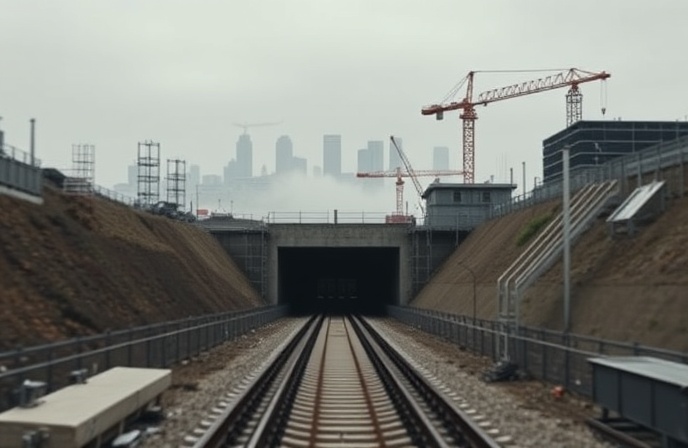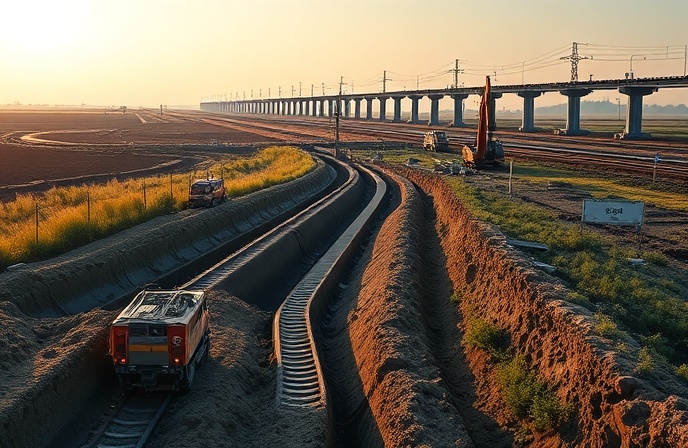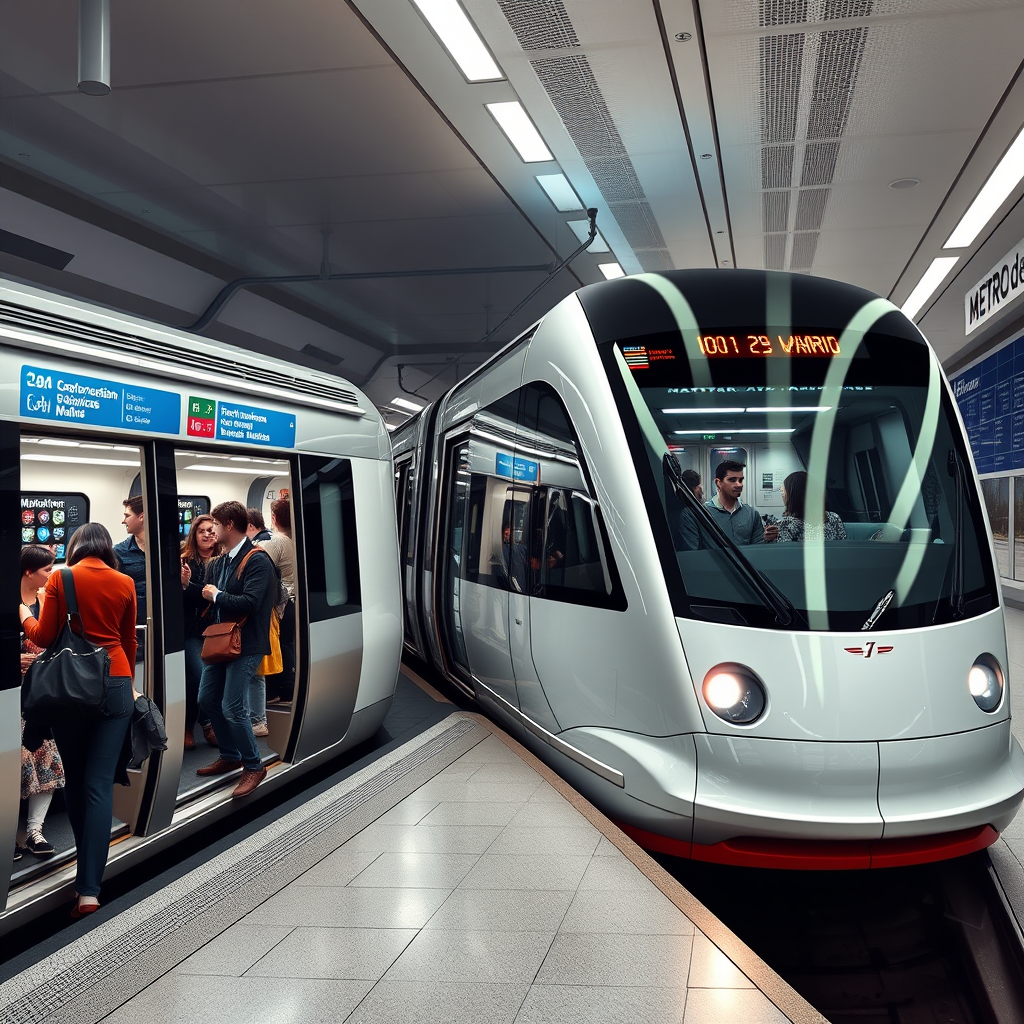Liverpool’s HS2 Station: Economic Growth & Connectivity
Liverpool’s new high-speed rail station: A £15 billion economic boost, transforming connectivity and creating thousands of jobs. Discover how!

Liverpool’s New High-Speed Rail Station: A Commission for Connectivity and Economic Growth
The Liverpool City Region Combined Authority (LCRCA) has undertaken a significant initiative to propel the region’s economic development and improve its connectivity through the establishment of a commission tasked with delivering a new high-speed railway station in Liverpool city centre. This article delves into the rationale behind this crucial project, exploring the multifaceted benefits it promises for the city, the complexities of its design and implementation, and the wider implications for the UK’s national rail network. The need for a modern, high-capacity station capable of accommodating High-Speed 2 (HS2) and Northern Powerhouse Rail (NPR) services is paramount, considering the projected economic benefits and increased passenger demand. This undertaking presents both significant opportunities and challenges, requiring careful planning, stakeholder collaboration, and a detailed understanding of the logistical complexities involved in integrating a new station into an existing urban infrastructure. The strategic importance of this project extends beyond Liverpool, impacting regional and national transportation networks and contributing to broader economic growth across the Northern Powerhouse region.
The Urgency for Enhanced Rail Connectivity
Liverpool’s current rail infrastructure struggles to meet the demands of a growing population and economy. The lack of a central high-speed rail station directly impacts journey times to major cities like London and Manchester, hindering both business and leisure travel. The integration of Liverpool into the HS2 (High-Speed 2) network and the Northern Powerhouse Rail (NPR) initiative is vital for unlocking the region’s full economic potential. Improved connectivity will significantly reduce journey times, facilitating trade, tourism, and attracting investment. The current limitations severely restrict access to national and international markets, a constraint that a modern, centrally located high-speed rail station is designed to overcome. The projected reduction in travel time between Liverpool and London to approximately 89 minutes and between Liverpool and Manchester to approximately 23 minutes highlights the transformative potential of this project.
The Commission’s Mandate: A Multifaceted Approach
Chaired by Professor Denise Barrett-Baxendale, the commission comprises experts from transport, business, and the public sector. Its remit extends beyond simply constructing a new station; it encompasses a comprehensive assessment of various aspects crucial for the project’s success. This includes a detailed evaluation of the station’s optimal size, functionality, location, and orientation within the city centre. This multi-disciplinary approach ensures that the station design not only meets the technical requirements of HS2 and NPR services but also integrates seamlessly with existing transport infrastructure and complements the surrounding urban environment. The commission’s careful consideration of these factors is crucial for mitigating potential disruption during construction and maximizing the station’s long-term usability and impact.
Economic Impact and Job Creation
The economic benefits projected for this project are substantial. The LCRCA estimates a £15 billion boost to the regional economy, driven by increased tourism, improved business connectivity, and the attraction of new investments. The project is also expected to create approximately 24,000 jobs, 11,000 new homes, and an annual increase of 3.6 million visitors to the city. These projected figures highlight the significant contribution this new station will make to Liverpool’s economic vitality and overall quality of life. The improved accessibility and reduced journey times will indirectly benefit numerous sectors, stimulating growth and improving the region’s competitiveness on a national and international scale.
Engineering Challenges and Sustainable Design
Integrating a new high-speed rail station into Liverpool’s existing urban fabric presents significant engineering challenges. Considerations include ground conditions, existing infrastructure, and minimizing disruption to surrounding businesses and residents during construction. Furthermore, sustainable design principles must be prioritized. The station must meet stringent environmental standards, incorporating energy-efficient technologies and minimizing its carbon footprint. The successful execution of this project requires meticulous planning and the adoption of innovative engineering solutions, ensuring the station’s seamless integration into the city’s existing landscape while adhering to the highest sustainability standards. The long-term operational efficiency and environmental impact must be at the forefront of the design process.
Conclusions
The creation of a new high-speed railway station in Liverpool marks a pivotal moment for the city’s future. The initiative spearheaded by the LCRCA, through the establishment of a dedicated commission, demonstrates a commitment to enhancing connectivity, boosting economic growth, and improving the overall quality of life for residents. The project’s success hinges on a multifaceted approach, integrating technical expertise with careful urban planning and sustainable design principles. The anticipated economic benefits, including job creation, increased tourism, and improved business connectivity, underscore the transformative potential of this initiative. While the project presents significant engineering challenges, its successful implementation will not only enhance Liverpool’s standing as a major economic hub but also contribute significantly to the broader success of the HS2 network and the Northern Powerhouse Rail initiative. The meticulous planning, multi-stakeholder collaboration, and the careful consideration of both economic and environmental factors will be crucial in ensuring the project’s long-term viability and positive impact on the Liverpool City Region and the UK as a whole. The commission’s work represents a forward-thinking approach to infrastructure development, highlighting the importance of integrating transportation improvements with broader economic and social goals. The projected benefits, while ambitious, are achievable with diligent planning and execution, positioning Liverpool for significant growth and prosperity in the years to come.





